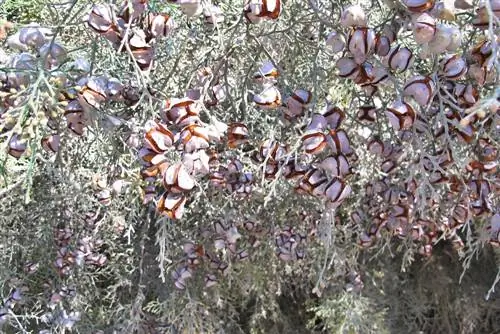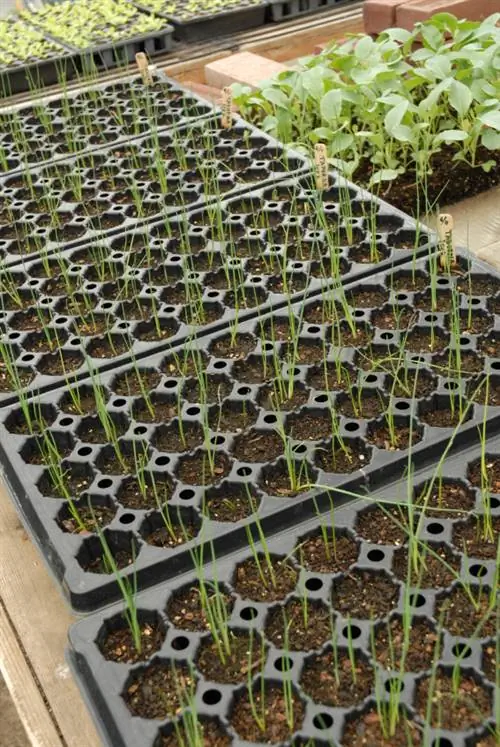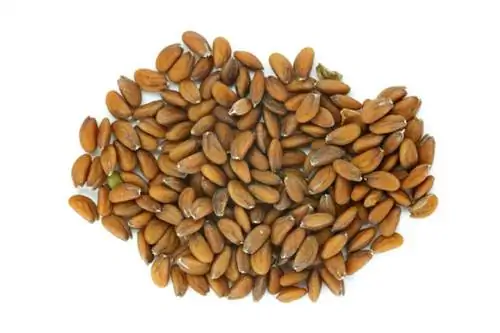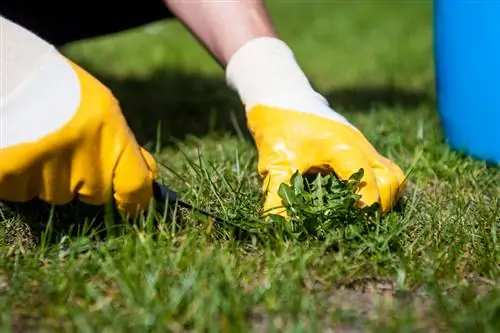- Author admin [email protected].
- Public 2023-12-16 16:46.
- Last modified 2025-06-01 06:02.
Some varieties of thuja produce a lot of seed heads every year. Others, on the other hand, only bloom a little and therefore bear very few fruits and seeds. Removing the seeds is usually unnecessary and hardly possible with a long thuja hedge.

Should thuja seeds be removed?
Removing thuja seeds is not necessary, but can be done if the sight of the brown fruits is disturbing or self-sowing is to be prevented. For the Thuja Smaragd variety, removing the seeds can strengthen the plant.
Removing thuja seeds - yes or no?
If there are a lot of fruits and therefore seeds hanging on the Thuja hedge, the question arises as to whether they should be removed. That's easy to answer: removal is not necessary.
If the sight of the brown fruits or dried seed heads bothers you, feel free to snap them off, especially if you don't want to sow yourself.
Removing Thuja Smaragd seeds
The Thuja Smaragd is an exception. It is one of the thujas that rarely produce seeds. If this tree of life is not maintained as a hedge but as an individual tree, it may be worthwhile to remove the seeds.
Then the emerald thuja has more strength to form new shoots and roots.
Why does the thuja bear a particularly large amount of fruit in some years?
In some years the arborvitae hedge bears a particularly large amount of fruit. That is sometimes - but not always! - an indication that the Thujen are not doing particularly well. The tree tries to reproduce further by producing more seeds before it dies.
Grow Thuja yourself from seeds?
Of course you can grow a tree of life for your hedge from the seeds yourself. However, this form of propagation is very time-consuming and is therefore rarely practiced.
To propagate, harvest the seeds in October and preferably sow them immediately in prepared seed trays (€35.00 at Amazon). The bowls are kept outdoors over autumn and winter because Thuja is a cold germinator. Many months can pass before germination occurs.
Caution: The seeds are particularly poisonous
The tree of life is poisonous! The concentration of poison in the seeds is particularly high. Keep them out of the reach of children.
Tip
Many Thuja varieties self-sow. They open the little cones in October and let the seeds fall out. If there are still brown buds on the tree of life in spring, these are actually dried seed heads.






